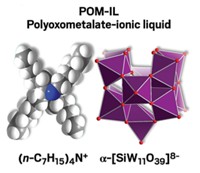Advertisement
Grab your lab coat. Let's get started
Welcome!
Welcome!
Create an account below to get 6 C&EN articles per month, receive newsletters and more - all free.
It seems this is your first time logging in online. Please enter the following information to continue.
As an ACS member you automatically get access to this site. All we need is few more details to create your reading experience.
Not you? Sign in with a different account.
Not you? Sign in with a different account.
ERROR 1
ERROR 1
ERROR 2
ERROR 2
ERROR 2
ERROR 2
ERROR 2
Password and Confirm password must match.
If you have an ACS member number, please enter it here so we can link this account to your membership. (optional)
ERROR 2
ACS values your privacy. By submitting your information, you are gaining access to C&EN and subscribing to our weekly newsletter. We use the information you provide to make your reading experience better, and we will never sell your data to third party members.
Environment
Fungi Mineralize Depleted Uranium
May 12, 2008
| A version of this story appeared in
Volume 86, Issue 19
Certain fungi can colonize surfaces of pieces of depleted uranium and transform the metal into stable minerals. The process could help prevent the toxic metal from leaching into groundwater or being taken up by plants, according to Geoffrey M. Gadd of the University of Dundee, in Scotland, and coworkers (Curr. Biol. 2008, 18, R375). Depleted uranium is the material left after 235U is separated to enrich uranium for use in nuclear reactors and nuclear weapons. Prized for its high density, depleted uranium is used in applications such as armor-piercing ammunition. Although depleted uranium is only weakly radioactive, it is still highly toxic. The researchers found that several fungi (one shown) form biofilms on a common uranium-titanium alloy. Such biofilms retain moisture on the alloy's surface, facilitating the formation of uranyl ions. The fungi also produce carboxylic acids that further promote uranium corrosion. The scientists used X-ray techniques to characterize the uranium products: A yellow uranium(VI) species, likely a uranyl hydroxy hydrate mineral such as schoepite, (UO2)4O(OH)6·6H2O, formed a crust around fungal structures, while small amounts of uranyl carboxylate and uranyl phosphate compounds accumulated inside fungal cells.






Join the conversation
Contact the reporter
Submit a Letter to the Editor for publication
Engage with us on Twitter